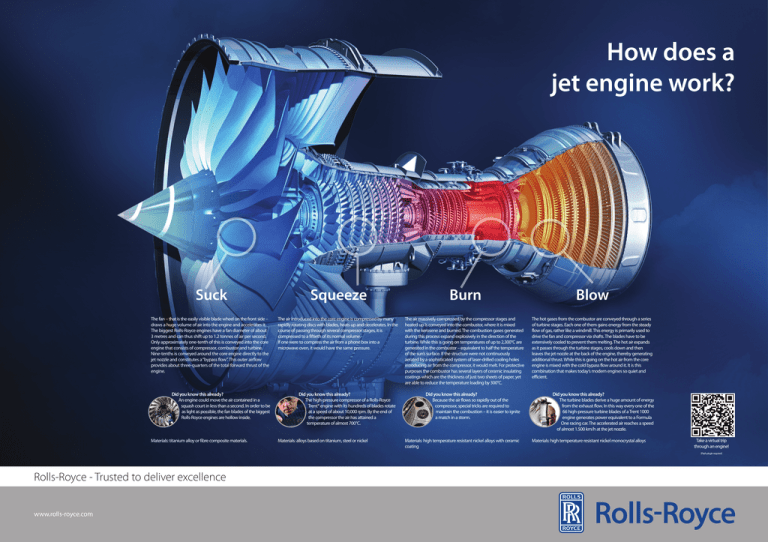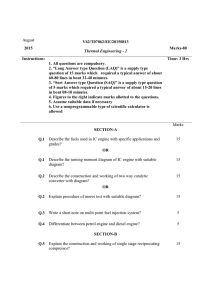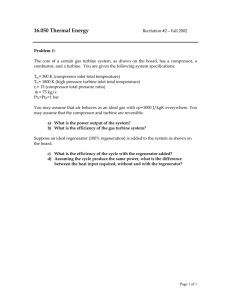How does a jet engine work? - Rolls
advertisement

How does a jet engine work? Suck Squeeze Burn Blow The fan – that is the easily visible blade wheel on the front side – draws a huge volume of air into the engine and accelerates it. The biggest Rolls-Royce engines have a fan diameter of about 3 metres and can thus shift up to 1.2 tonnes of air per second. Only approximately one-tenth of this is conveyed into the core engine that consists of compressor, combustor and turbine. Nine-tenths is conveyed around the core engine directly to the jet nozzle and constitutes a “bypass flow”. This outer airflow provides about three-quarters of the total forward thrust of the engine. The air introduced into the core engine is compressed by many rapidly rotating discs with blades, heats up and decelerates. In the course of passing through several compressor stages, it is compressed to a fiftieth of its normal volume. If one were to compress the air from a phone box into a microwave oven, it would have the same pressure. The air massively compressed by the compressor stages and heated up is conveyed into the combustor, where it is mixed with the kerosene and burned. The combustion gases generated during this process expand explosively in the direction of the turbine. While this is going on temperatures of up to 2,300°C are generated in the combustor – equivalent to half the temperature of the sun’s surface. If the structure were not continuously aerated by a sophisticated system of laser-drilled cooling holes introducing air from the compressor, it would melt. For protective purposes the combustor has several layers of ceramic insulating coatings which are the thickness of just two sheets of paper, yet are able to reduce the temperature loading by 300°C. The hot gases from the combustor are conveyed through a series of turbine stages. Each one of them gains energy from the steady flow of gas, rather like a windmill. This energy is primarily used to drive the fan and compressor via shafts. The blades have to be extensively cooled to prevent them melting. The hot air expands as it passes through the turbine stages, cools down and then leaves the jet nozzle at the back of the engine, thereby generating additional thrust. While this is going on the hot air from the core engine is mixed with the cold bypass flow around it. It is this combination that makes today’s modern engines so quiet and efficient. Did you know this already? An engine could move the air contained in a squash court in less than a second. In order to be as light as possible, the fan blades of the biggest Rolls-Royce engines are hollow inside. Materials: titanium alloy or fibre composite materials. Did you know this already? The high-pressure compressor of a Rolls-Royce Trent® engine with its hundreds of blades rotate at a speed of about 10,000 rpm. By the end of the compressor the air has attained a temperature of almost 700°C. Materials: alloys based on titanium, steel or nickel Did you know this already? Because the air flows so rapidly out of the compressor, special tricks are required to maintain the combustion – it is easier to ignite a match in a storm. Materials: high temperature resistant nickel alloys with ceramic coating Did you know this already? The turbine blades derive a huge amount of energy from the exhaust flow. In this way every one of the 66 high-pressure turbine blades of a Trent 1000 engine generates power equivalent to a Formula One racing car. The accelerated air reaches a speed of almost 1.500 km/h at the jet nozzle. Materials: high temperature resistant nickel monocrystal alloys Take a virtual trip through an engine! (Flash plugin required) Rolls-Royce - Trusted to deliver excellence www.rolls-royce.com



